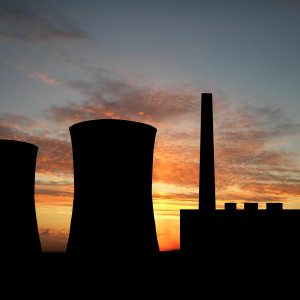The international community has come together and finally approved a deal to demonstrate a global commitment to reduce carbon emissions and to keep global warming from rising above the 2 degrees Celsius mark from pre-industrial levels.
The Paris Climate Agreement is a landmark occasion for the global community and it symbolizes and ensures our commitment to fight climate change here at home. And while President Obama has demonstrated his lasting commitment to this goal through his support of the climate talks, our next president must be equally committed.
Our nation’s presidential candidates have very different visions of how America can address climate change. On one hand, we have candidates who entirely ignore the government’s critical role in this fight. On the other hand, we have candidates who put forth dream proposals that are entirely out of reach. Somewhere in between lies Democratic candidate Hillary Clinton. Although her plan leaves room for improvement, there are goals that are well within reach.
So let’s evaluate what Clinton has proposed by looking at the politics of the possible.
What Clinton is trying to do is not easy. A clean energy plan that will achieve “deep decarbonization” by the year 2050 needs to take advantage of all forms of market-viable, carbon-free electricity generation.
Clinton calls for an addition of 500 million solar panels by 2020 with enough renewable energy to power every home in America by 2027. Clinton’s vision is both ambitious and forward-thinking, but unachievable at this historical juncture. A viable alternative is expanding the use of zero-carbon nuclear energy.
For production of solar energy to be on par with nuclear energy’s current electricity output, the country would need 2.5 billion solar panels, an impossible feat by any standard. The realities of the market capacity and grid reliability needed for renewables to achieve the “deep decarbonization” that Clinton calls for are a real concern. Clinton’s goal is to generate 33 percent of U.S. electricity from all non-carbon emitting energy sources by 2027 — a 7 percent increase from current levels. This rapid increase will not be possible without expanding nuclear energy beyond its current 20 percent of U.S. electricity production.
Another issue in this difficult path toward a cleaner energy portfolio is making the transition while meeting a projected 22 percent increase in electricity demand as early as 2040. All low-carbon sources will be needed to reach this goal. Among them, nuclear energy will play an increasingly vital role for large-scale, around-the-clock power to keep up with this demand, and do so in an environmentally friendly way. To meet Clinton’s goal for 2050, we must start investing in new nuclear energy facilities and extending the operational licenses of existing plants now.
Clinton’s plan rightly expresses the value in pursuing the development of advanced nuclear technology known as small modular reactors (SMRs). While still in development, it is anticipated that SMRs can be market-ready in the next 10 years. SMRs are much smaller than traditional nuclear energy facilities and can be built faster, with the added benefit of matching electricity demand as it increases. But even with SMRs on the horizon, our nation’s electricity grid will need the continued electricity production from traditional nuclear energy facilities for decades to come.
Nuclear energy facilities produce roughly 60 percent of America’s carbon-free electricity — more than all other sources combined. And while Clinton includes advanced nuclear reactor technology as part of her plan, she should go further in ensuring the role for existing power plants as advanced designs are developed.
Any thorough and common-sense energy plan must pursue the development of new nuclear energy facilities — like those creating thousands of jobs each in Tennessee, South Carolina and Georgia. Her plan to reduce emissions rests on the combination of wind, hydro, geothermal and solar, but we cannot afford to forget America’s workhorse in carbon-free energy. Advances in renewables work best in partnership with the scale and reliability of nuclear energy.
Clinton’s plan is a signal to the world that the United States will continue President Obama’s climate agenda to reduce carbon emissions. However, if we are to lead the world toward a cleaner energy future, our nation’s leadership must support the expansion of nuclear power here at home.

